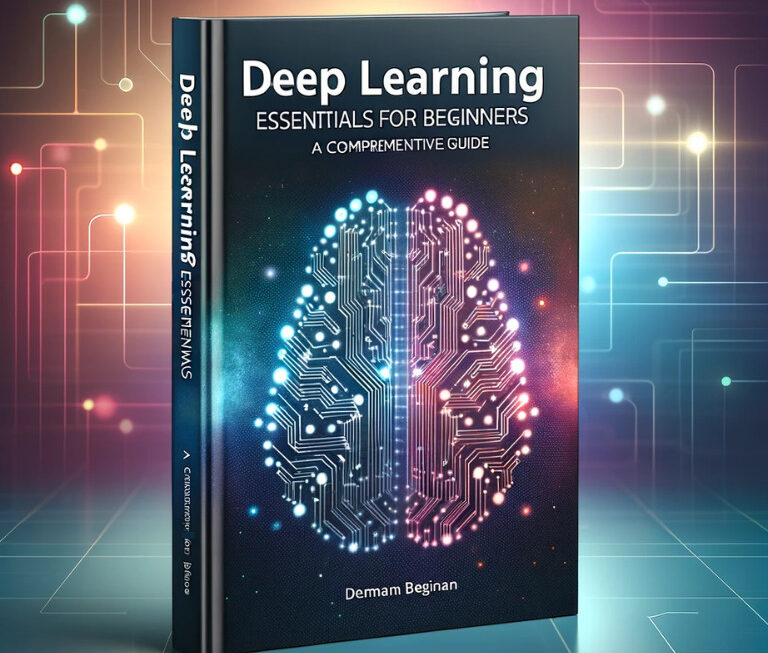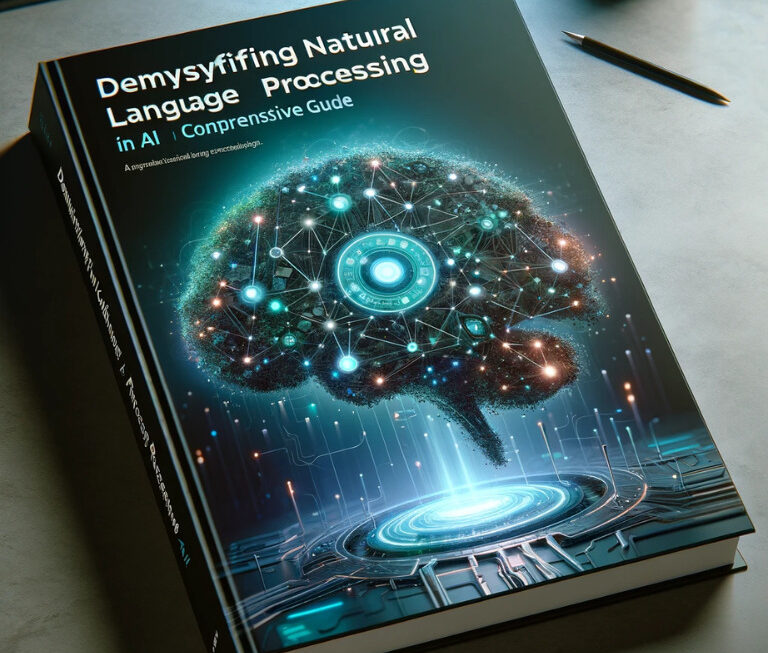In recent years, AI has revolutionized the landscape of software development, offering unparalleled assistance to programmers. The integration of AI into coding environments like Sublime Text has been a game-changer, enhancing coding efficiency and accuracy. AI-powered tools in Sublime Text extend beyond mere code completion; they provide insightful suggestions, bug detection, and even automate repetitive coding tasks. This evolution marks a significant leap from traditional programming practices, enabling developers to focus more on creative and complex aspects of coding.
The Benefits of Integrating AI with Sublime Text
Sublime Text, known for its speed and efficiency, becomes even more powerful with AI integration. AI tools within this editor can significantly reduce the time spent on coding, thanks to features like automatic code generation, context-aware suggestions, and quick navigation across a vast package ecosystem. This integration is not just about speeding up the coding process; it also involves reducing errors, understanding complex codebases quickly, and learning from the vast repositories of code available online.
- Speed and Efficiency: AI accelerates the coding process, suggesting complete blocks of code and offering corrections in real-time, thus saving hours of manual coding.
- Error Reduction: AI algorithms can spot and suggest fixes for bugs that might be overlooked by human eyes, thus enhancing the accuracy and reliability of the code.
- Learning and Adaptation: AI tools learn from the user’s coding style and adapt to provide personalized suggestions, making them more effective over time.
- Navigating Packages: With Sublime Text’s vast array of packages, AI helps in quickly identifying the most relevant packages and tools for a given project.

Getting Started with AI Code Completion
Getting started with AI code completion in Sublime Text is a straightforward yet powerful process. By introducing plugins like Codex AI, Tabnine, and Codeium, developers can unlock the potential of AI-driven suggestions. These tools offer convenience through keybindings and real-time suggestions, making coding faster and more efficient. Whether you’re a beginner or an experienced coder, these AI plugins provide valuable support, helping you write code with greater ease and accuracy.
Setting Up AI Plugins
Sublime Text’s versatility is further enhanced with the addition of AI code completion tools such as Codex AI, Tabnine, and Codeium. Each of these plugins brings a unique set of features to streamline your coding experience.
- Codex AI: To utilize Codex AI in Sublime Text, first, highlight the code segment you wish to complete. Then use the keybindings ‘ctrl-shift-insert’ on Windows and Linux, or ‘command-shift-a’ on OSX. This action triggers AI-driven suggestions for completing your code.
- Tabnine: Renowned for its efficiency, Tabnine is an AI-powered code completion extension trusted by millions. To get started, install the Tabnine package in Sublime Text. Once installed, as you type, the Tabnine completion dialog box appears, offering suggestions to complete your code.
- Codeium: For those looking to streamline their workflow, installing the Codeium extension is a straightforward process. Accessible through Package Control in Sublime Text, Codeium offers suggestions as you write, enhancing both your coding speed and accuracy.
Basic Usage Tips
When you begin to use these AI tools, there are a few tips to keep in mind:
- Experiment with Different Plugins: Each plugin has its strengths, so try them out to see which aligns best with your coding style and needs.
- Learn the Shortcuts: Familiarize yourself with the keybindings of each plugin to quickly invoke AI suggestions without disrupting your coding flow.
- Customize Settings: Most AI tools offer customization options. Tailor these settings to suit your preferences and enhance your coding experience.
By incorporating these AI code completion tools into your Sublime Text workflow, you’ll notice a significant improvement in your coding speed and efficiency. The seamless integration of these tools with the editor’s existing features makes Sublime Text an even more powerful ally in your development tasks.
Advanced Code Completion Techniques
Advanced code completion in Sublime Text takes coding assistance to the next level. Beyond basic suggestions, AI tools offer contextual understanding, enabling them to provide code suggestions that not only adhere to syntax but also align logically with your project. These tools can also assist with code refactoring, making your code more efficient and readable.
Harnessing AI for Complex Coding Tasks
While basic AI code completion is a great start, there’s much more to explore, especially for complex coding projects. Advanced features of AI tools in Sublime Text can handle not just simple code suggestions but also provide assistance with more intricate coding structures and algorithms.
# Sample Python code illustrating advanced AI code completion
def calculate_fibonacci(n):
if n <= 0:
return []
elif n == 1:
return [0]
elif n == 2:
return [0, 1]
# Let's leverage AI to generate the Fibonacci sequence
fibonacci_sequence = [0, 1]
while len(fibonacci_sequence) < n:
# AI code completion can suggest the next Fibonacci number effortlessly
next_number = fibonacci_sequence[-1] + fibonacci_sequence[-2]
fibonacci_sequence.append(next_number)
return fibonacci_sequence
# Utilizing AI for code completion to generate Fibonacci sequence
fib_sequence = calculate_fibonacci(10)
print(fib_sequence)In this example, AI code completion assists in generating the Fibonacci sequence efficiently. This is just a glimpse of how AI in Sublime Text can handle complex coding tasks, making it a valuable tool for developers working on intricate algorithms and projects.
Customizing AI Settings for Personalized Code Suggestions
Personalizing your AI tool settings in Sublime Text can lead to more relevant and useful code suggestions. Here’s how you can do it:
- Adjust Language Models: Many AI code completion tools allow you to specify the programming languages you are working with, providing more accurate suggestions.
- Feedback Loops: Some tools offer the ability to give feedback on suggestions. This input helps the AI to learn from your preferences and improve future suggestions.
- Tweaking Autocomplete Sensitivity: You can often adjust how aggressively the AI offers suggestions, finding the right balance between helpfulness and intrusiveness.
By mastering these advanced techniques, you can take full advantage of AI in Sublime Text, making your coding process not just faster but also more intelligent and refined.
Exploring Sublime Text’s AI-Enhanced Package Ecosystem
Exploring Sublime Text’s AI-enhanced package ecosystem adds a new dimension to your coding experience. AI tools can assist in selecting the most suitable packages based on your coding style and project requirements. They provide package recommendations and even automate package configuration, simplifying the setup process.
Navigating through a Variety of AI-Enhanced Packages
Sublime Text is renowned for its extensive package ecosystem, and the addition of AI enhances this experience. AI tools can guide you in choosing the right packages for your projects, based on your coding patterns and project requirements.
- Package Recommendations: AI algorithms can analyze your coding style and project type to recommend the most suitable Sublime Text packages.
- Automated Configuration: Some AI tools offer assistance in configuring these packages, simplifying the setup process.
Selecting the Right AI Tools for Specific Coding Needs
With a plethora of AI-enhanced packages available, selecting the appropriate ones can be daunting. Here’s how to make informed choices:
- Identify Your Requirements: Understand the specific needs of your project. Whether it’s front-end development, data analysis, or machine learning, there are AI packages tailored for different purposes.
- Research and Reviews: Look up reviews and user experiences with various packages to gauge their effectiveness and suitability for your project.
- Trial and Error: Don’t hesitate to experiment with different packages. The hands-on experience will give you a better understanding of how they fit into your workflow.
By effectively navigating Sublime Text’s AI-enhanced package ecosystem, you can significantly boost your coding efficiency and productivity, finding tools that not only speed up the process but also enhance the quality of your work.
Integrating GitHub Copilot with Sublime Text

Integrating GitHub Copilot with Sublime Text is a seamless process that elevates your coding experience. By installing the Copilot plugin and configuring it, developers gain access to an advanced level of code suggestions and generation. Copilot goes beyond basic code completion, offering features like code generation based on comments, understanding coding intent, and even suggesting tests.
Setting Up GitHub Copilot
GitHub Copilot, an AI-powered code completion tool, can be seamlessly integrated into Sublime Text, offering an advanced level of code suggestions and generation. Here’s how to set it up:
- Installation: First, install GitHub Copilot by accessing the Sublime Text Package Control and searching for the Copilot plugin.
- Configuration: Once installed, configure Copilot by logging in with your GitHub account and setting your preferences in the plugin settings.
Enhancing Coding with AI-Powered Suggestions
GitHub Copilot goes beyond basic code completion; it can generate entire functions, understand coding intent, and even suggest tests for your code. Here’s how to make the most of it:
- Code Generation: Copilot can autocomplete not just lines but entire blocks of code based on the comments and context you provide.
- Understanding Intent: The AI analyzes your current codebase and comments to understand the intent behind your code, offering highly relevant suggestions.
- Test Suggestions: Copilot can also suggest tests for your functions, ensuring your code is robust and error-free.
Integrating GitHub Copilot with Sublime Text elevates your coding experience, providing a sophisticated level of AI assistance that can significantly improve both the speed and quality of your code.
Leveraging OpenAI Models in Sublime Text
Leveraging OpenAI models in Sublime Text introduces a new dimension of code assistance. The OpenAI Completion plugin utilizes natural language processing (NLP) models to provide intelligent code suggestions and manipulations. It can append, insert, and edit code segments based on user input and context, enhancing coding efficiency.
Using OpenAI’s Natural Language Processing Model for Code Assistance

OpenAI Completion is a notable plugin for Sublime Text, utilizing OpenAI’s natural language processing (NLP) models to enhance the code assistant experience within the editor. This plugin offers a range of features that go beyond traditional code completion:
- Code Manipulation: It allows for appending, inserting, and editing selected code with OpenAI models.
- Selected Text Capture: This feature captures the selected text, providing context-aware suggestions and modifications.
- Chat Mode Support: Powered by ChatGPT models, this mode supports interactive coding sessions, where you can ask questions and get coding advice in a conversational format.
Unique Features of OpenAI Plugin in Sublime Text
The OpenAI plugin in Sublime Text stands out with its unique features:
- Interactive Experience: The chat mode creates an interactive experience, making coding more engaging and intuitive.
- Contextual Suggestions: The plugin’s ability to understand and manipulate code contextually leads to more accurate and relevant code suggestions.
- Versatility: It’s versatile in handling different programming languages and coding scenarios, making it a valuable tool for a wide range of developers.
By leveraging the OpenAI models in Sublime Text, developers can enjoy an enriched coding experience, where AI not only assists with code but also interacts and adapts to the coder’s style and needs.
Tips and Tricks for Efficient AI-Assisted Coding
Efficient AI-assisted coding in Sublime Text is about combining the power of AI with human judgment. Developers are encouraged to review and understand AI suggestions, customizing settings to align with their coding style. Staying updated with AI developments ensures that users harness the full potential of these tools. Troubleshooting common issues, such as inaccurate suggestions or performance concerns, ensures a smooth AI-assisted coding experience.
Best Practices for Using AI Effectively in Coding Projects
To maximize the benefits of AI in Sublime Text, here are some best practices to consider:
- Combine AI with Human Judgement: Always review and understand the AI’s suggestions. Using AI as a tool, rather than a replacement for human judgement, leads to better coding outcomes.
- Customize According to Need: Make use of customization options available in AI tools to tailor them to your specific coding style and project requirements.
- Stay Updated with AI Developments: AI tools are continually evolving. Keeping abreast of updates and new features can enhance your coding efficiency.
Troubleshooting Common Issues with AI in Sublime Text
Even with advanced AI tools, you might encounter issues. Here’s how to troubleshoot some common ones:
- Inaccurate Suggestions: If an AI tool frequently provides irrelevant suggestions, consider resetting its learning data or adjusting its sensitivity settings.
- Performance Issues: AI tools can be resource-intensive. If you experience slowdowns, try limiting the number of active AI plugins or adjust their settings for optimal performance.
- Compatibility Problems: Ensure that your AI plugins are compatible with your version of Sublime Text. If issues persist, seeking support from the plugin community can be helpful.
Employing these tips and tricks can significantly enhance your AI-assisted coding experience in Sublime Text, ensuring that AI tools are not only helpful but also align with your unique coding approach.
Conclusion and Future Outlook
In conclusion, the integration of AI in Sublime Text has revolutionized the coding experience, offering unprecedented speed, accuracy, and convenience. AI code completion tools, like Codex AI, Tabnine, GitHub Copilot, and OpenAI models, have become indispensable for developers, enhancing both productivity and code quality.
Looking ahead, the future promises even more sophisticated AI features, including enhanced predictive coding and deeper tool integration. Developers can anticipate an enriched coding experience, where AI not only simplifies the process but also contributes to more creative and innovative software development. The journey of AI in Sublime Text is an exciting one, with endless possibilities for the coding world.




